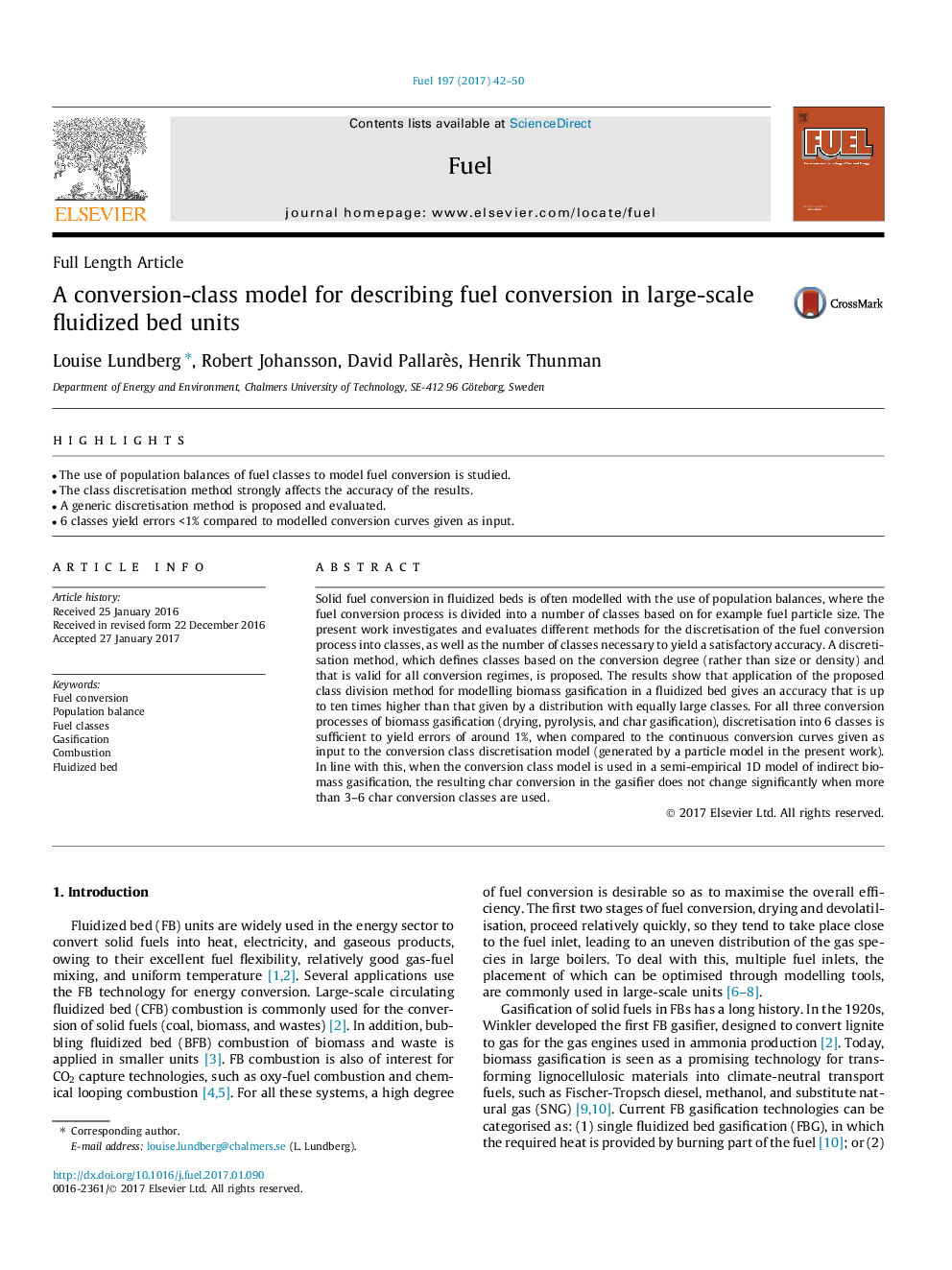| Article ID | Journal | Published Year | Pages | File Type |
|---|---|---|---|---|
| 6475149 | Fuel | 2017 | 9 Pages |
â¢The use of population balances of fuel classes to model fuel conversion is studied.â¢The class discretisation method strongly affects the accuracy of the results.â¢A generic discretisation method is proposed and evaluated.â¢6 classes yield errors <1% compared to modelled conversion curves given as input.
Solid fuel conversion in fluidized beds is often modelled with the use of population balances, where the fuel conversion process is divided into a number of classes based on for example fuel particle size. The present work investigates and evaluates different methods for the discretisation of the fuel conversion process into classes, as well as the number of classes necessary to yield a satisfactory accuracy. A discretisation method, which defines classes based on the conversion degree (rather than size or density) and that is valid for all conversion regimes, is proposed. The results show that application of the proposed class division method for modelling biomass gasification in a fluidized bed gives an accuracy that is up to ten times higher than that given by a distribution with equally large classes. For all three conversion processes of biomass gasification (drying, pyrolysis, and char gasification), discretisation into 6 classes is sufficient to yield errors of around 1%, when compared to the continuous conversion curves given as input to the conversion class discretisation model (generated by a particle model in the present work). In line with this, when the conversion class model is used in a semi-empirical 1D model of indirect biomass gasification, the resulting char conversion in the gasifier does not change significantly when more than 3-6 char conversion classes are used.
